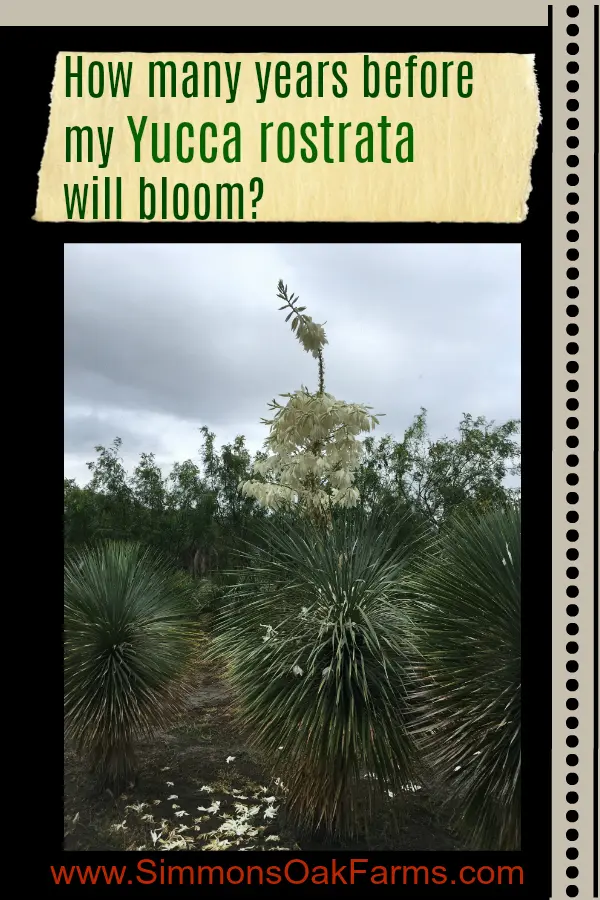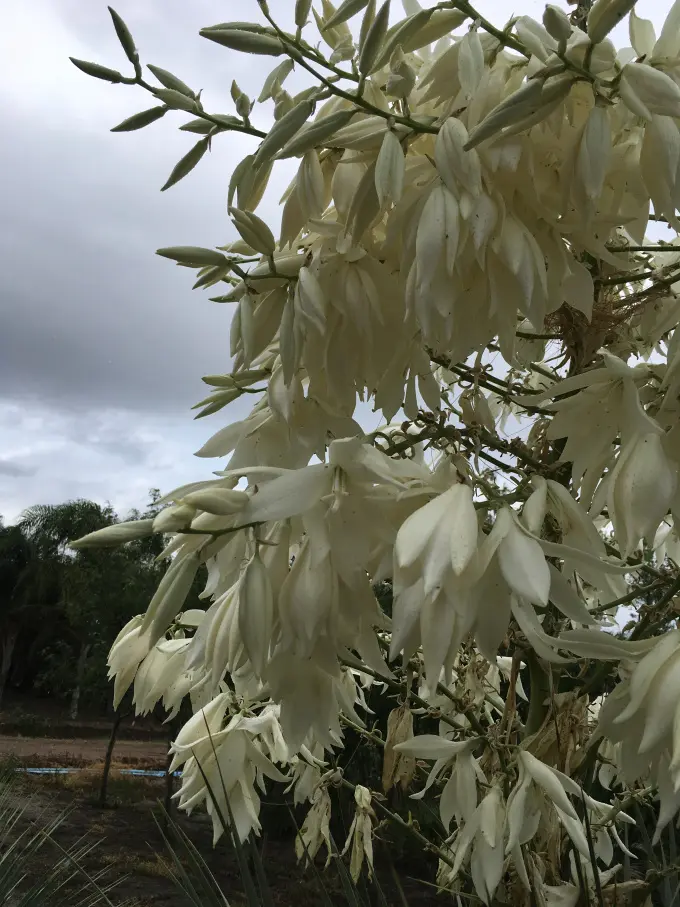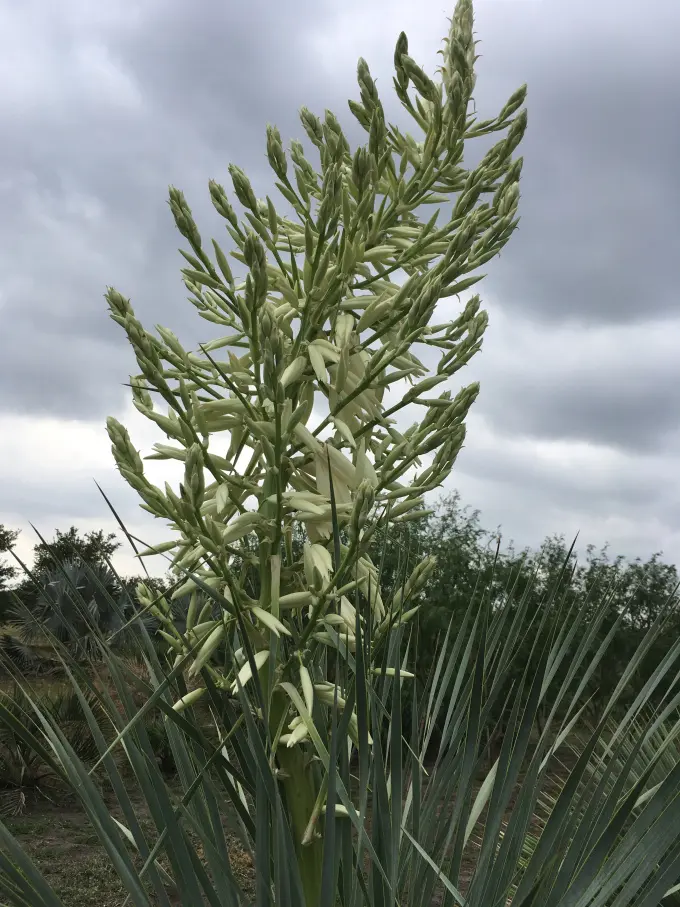
It is rare that I ever see a rostrata blooming. Ours were five years old before the first bloom – and then it wasn’t like the entire field bloomed – less than 5% had a flower stalk.
The flower spikes are less structured than other Yuccas but the petals are large, airy, and quite striking. With Spanish Dagger (Yucca trucleana), the trunk tends to split into a double-head after it blooms and drys naturally. If the blossom is cut fresh to be eaten, the trunk will not divide into a double. Ironically, removing the bloom stem on a rostrata will usually cause the trunk to split into a double head.
A few other things we have discovered about Yucca rostratas are:
- After blooming the flower stem falls off the plant, leaving an open wound on the trunk which either scars or, in wet weather, rots.
- The rostrata is pollinated by the yucca moth. That moth is not located in the Rio Grande Valley (at least not in great numbers) so our chance of getting seed from a dried bloom stem is extremely low.

But isn’t the bloom beautiful? This one is about two weeks old. I have not noticed any pollinator or bird activity around it. Mockingbirds are often seen singing and snacking at the top of Spanish dagger plumes (Yucca trucleana). I would think that this bloom would taste pretty similar.

We decided that in order to protect the rostratas from scarring and rot, our best strategy will be to remove each bloom stem at this stage – shortly after they appear.
Their symmetry, beautiful blue-grey color and graceful movement in the slightest of breezes makes up for us missing out on their flowers.
Yucca rostrata – another beautiful, water-wise Texas native.
